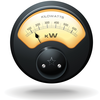Using gThumb to view, process, and present images
|
Image viewers abound under Linux, and some have additional functions that permit universal application beyond the viewer capability. A particularly successful combination is gThumb, which consists of an image viewer together with software that allows the user to perform simple image editing tasks [1].
Installation
The gThumb software was developed for the Gnome desktop. For distributions that use Gnome as their interface, therefore, it is usually already installed. However, the software also runs with most other work environments, which at times leads to extensive dependencies.
You can install gThumb on Ubuntu with a simple:
[...]
Use Express-Checkout link below to read the full article (PDF).
Buy this article as PDF
Express-Checkout as PDF
Pages: 4
Price $0.99
(incl. VAT)
(incl. VAT)



